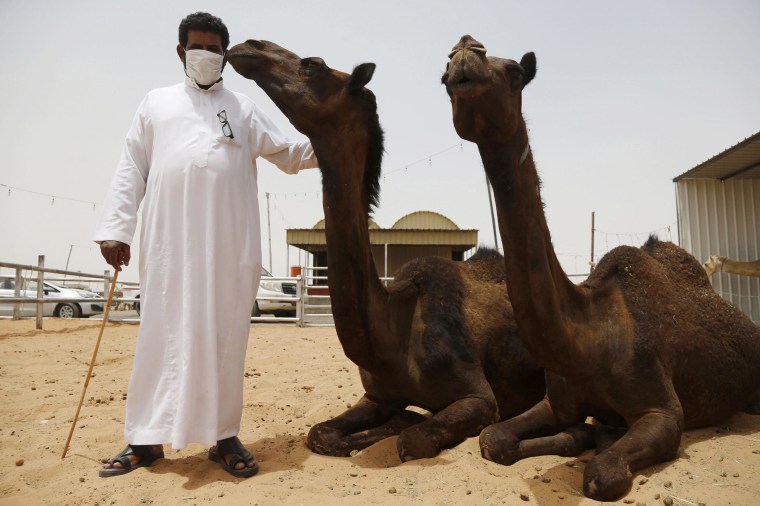A possible Ebola scare briefly closed a Charlotte, North Carolina-area emergency room. It turns out the patient almost certainly didn’t have anything infectious, but had a history of travel to a country with an infectious disease.
Health workers have a long list of infections to watch for. Some require isolation, while others don’t transmit person to person even if they are of concern. Here are a few:
MERS
Middle East Respiratory Syndrome, or MERS, is still circulating in the Middle East, although not as quickly as it was in the spring. It’s a respiratory infection caused by a coronavirus, related to severe acute respiratory syndrome or SARS virus. So far, MERS has infected 837 people and killed 291 of them, according to the World Health Organization.

Chikungunya
Chikungunya has been spreading out of Africa into the Indian Ocean region, Asia and Europe in recent years. So far, more than 400 travelers have carried it into the U.S. and it has spread for the first time in Florida and the New York area. The Pan American Health Organization reports more than 900,000 cases since December across the Caribbean and Central America. It has killed 25 people. It’s carried by the same mosquitoes that carry dengue and West Nile. It’s not especially deadly but it’s very painful and up to 90 percent of infected people feel sick. Chikungunya does not spread person to person, but if a mosquito bites an infected person and bites someone else, it can spread that way. Clinics are on the alert for it.
Dengue
Dengue is moving into the United States, especially in Florida and south Texas. Three people have died recently in the U.S. from dengue. Like chikungunya, it’s spread by mosquitoes and health experts are on alert for cases among people who have not traveled. Dengue is the world's fastest-spreading tropical disease and WHO says it represents a pandemic threat. It can cause a hemorrhagic fever — a fairly horrific set of symptoms that include bleeding under and on the surface of the skin. The good news is that only about 20 percent of people infected with dengue show any serious symptoms at all. It’s another one that doesn’t pass person to person.
Bird Flu
There are two flavors here — H5N1 and H7N9. H5N1 first showed up in 1998, and started circulating in earnest in 2003. It kills off flocks of chickens, but can quietly circulate in ducks, so it’s hard to control. It’s infected 665 people in 15 countries, killing 392 of them. So far, H5N1 remains hard to catch and people rarely infect other people — most cases have had contact with birds of some sort.
The H7N9 virus only showed up a year or so ago in China, but it’s infected 450 people and killed more than 165 of them, with four new cases reported this week. Influenza scares health experts more than any other virus, because it can spread so easily from person to person and has a high death rate when a new strain starts spreading.

Measles
Measles is one of the most infectious diseases out there. It is easily prevented with vaccination, but poverty, disasters and a recent move to question vaccine safety in rich countries had led to pockets of outbreaks around the world and in the United States.
An ongoing measles outbreak in the Philippines has sickened more than 36,000 people and killed at least 50, and at least 129 measles cases from 13 states have been reported in the U.S. in 2014 so far. CDC says 22 of them were carried back by travelers, most of them unvaccinated.
A single person can infect between 12 and 18 others with casual contact such as sitting next to them. Hospitals and ERs are asked to quickly isolate patients with possible measles, and anyone they may have been in contact with will be tracked down and cautioned to watch for symptoms.
Drug-resistant tuberculosis
The bacteria that cause TB can float in the air for hours, making it very hard to trace the source of infection and making it very hard to avoid. TB is usually easy to treat with antibiotics, but drug-resistant forms have emerged that resist most of the mainline drugs and that can take months or even years to get rid of. A patient showing with suspected drug-resistant TB will set off a health alert, although it takes prolonged contact for one person to infect another.
Hantavirus
Hantavirus, sometimes called Sin Nombre virus, is a very nasty virus that can cause pulmonary syndrome. There’s no cure. People cannot give it to other people. Rodents are the usual source of infections — the virus can be carried in their droppings and dried urine. An outbreak of hantavirus in Yosemite National Park in 2012 killed three campers and sickened five others.
Plague
Plague is another home-grown threat. People often don’t realize it still circulates in the U.S., causing anywhere between one and 17 human cases a year, according to CDC. The most common form is bubonic plague, but if breathed in the bacteria can cause pneumonic plague, which can spread easily from person to person. Fleas from rodents are the usual carrier.
Other viral hemorrhagic fevers
Ebola is the best-known now, but there are several viral hemorrhagic fevers besides dengue to watch out for. They include yellow fever, which can be found in many tropical areas, and Crimean-Congo Hemorrhagic Fever virus.

